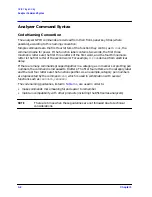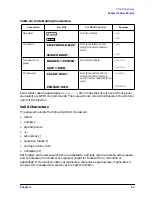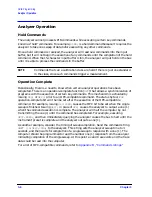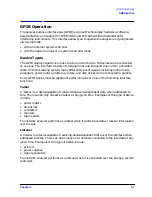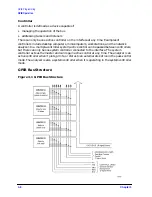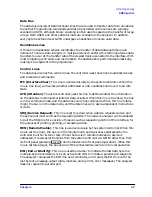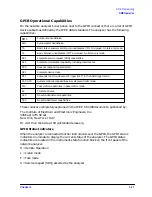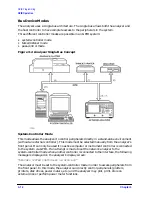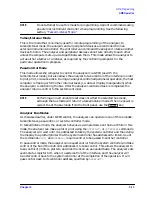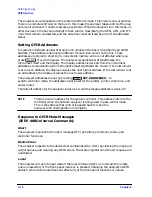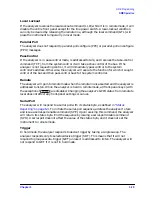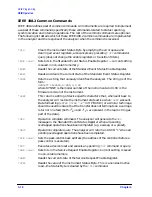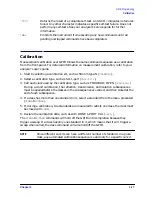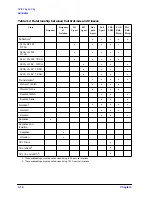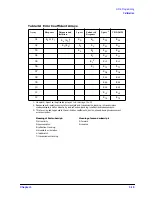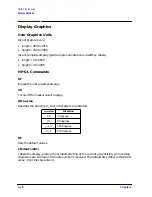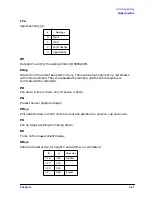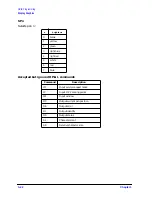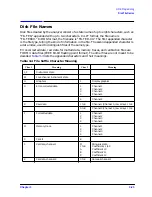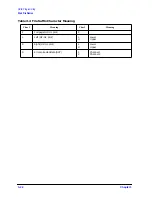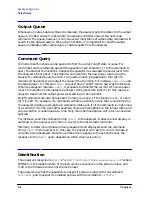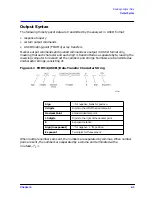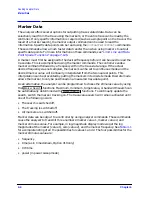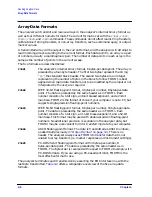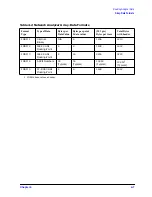
3-16
Chapter 3
GPIB Programming
GPIB Operation
IEEE 488.2 Common Commands
IEEE 488.2 defines a set of common commands. All instruments are required to implement
a subset of these commands, specifically those commands related to status reporting,
synchronization and internal operations. The rest of the common commands are optional.
The following list details which of these IEEE 488.2 common commands are implemented
in the analyzer and the response of the analyzer when the command is received.
*CLS
Clears the instrument Status Byte by emptying the error queue and
clearing all event registers, also cancels any preceding
*OPC
command or
query (does not change the enable registers or transition filters).
*ESE <num>
Sets bits in the Standard Event Status Enable Register — current setting
is saved in non-volatile memory.
*ESE?
Reads the current state of the Standard Event Status Enable Register.
*ESR?
Reads and clears the current state of the Standard Event Status Register.
*IDN?
Returns a string that uniquely identifies the analyzer. The string is of the
form:
HEWLETT PACKARD,87NNE,0,X.XX
where 87NNE is the model number of the instrument and X.XX is the
firmware revision of the instrument.
*LRN?
This returns a string of device specific characters that, when sent back to
the analyzer will restore the instrument state active when
*LRN?
was sent.
Data formatting (
ENTER USING “-K”
in HP BASIC) or a similar technique
should be used to ensure that the transfer does not terminate on a carriage
return or line feed (both <
C
R
> and <
L
F
> are present in the learn string as
part of the data).
*OPC
Operation complete command. The analyzer will generate the
OPC
message in the Standard Event Status Register when all pending
overlapped operations have been completed (e.g. a sweep, or a preset).
*OPC?
Operation complete query. The analyzer will return an ASCII “1” when all
pending overlapped operations have been completed.
*PCB <num>
Sets the pass-control-back address (the address of the controller before a
pass control is executed).
*RST
Executes a device reset and cancels any pending
*OPC
command or query.
*SRE <num>
Sets bits in the Service Request Enable Register. Current setting is saved
in non-volatile memory.
*SRE?
Reads the current state of the Service Request Enable Register.
*STB?
Reads the value of the instrument Status Byte. This is a non-destructive
read—the Status Byte is cleared by the
*CLS
command.
Summary of Contents for 8719ES
Page 15: ...1 1 1 Alphabetical Command Reference ...
Page 293: ...2 1 2 Introduction to Instrument Control ...
Page 310: ...3 1 3 GPIB Programming ...
Page 334: ...4 1 4 Reading Analyzer Data ...
Page 343: ...5 1 5 Data Processing Chain ...
Page 350: ...6 1 6 Error Reporting ...
Page 364: ...7 1 7 Programming Examples ...
Page 502: ...A 1 A Preset Conditions ...
Page 517: ...B 1 B Command Listings ...

